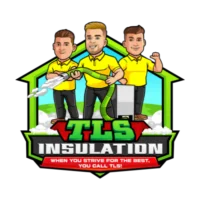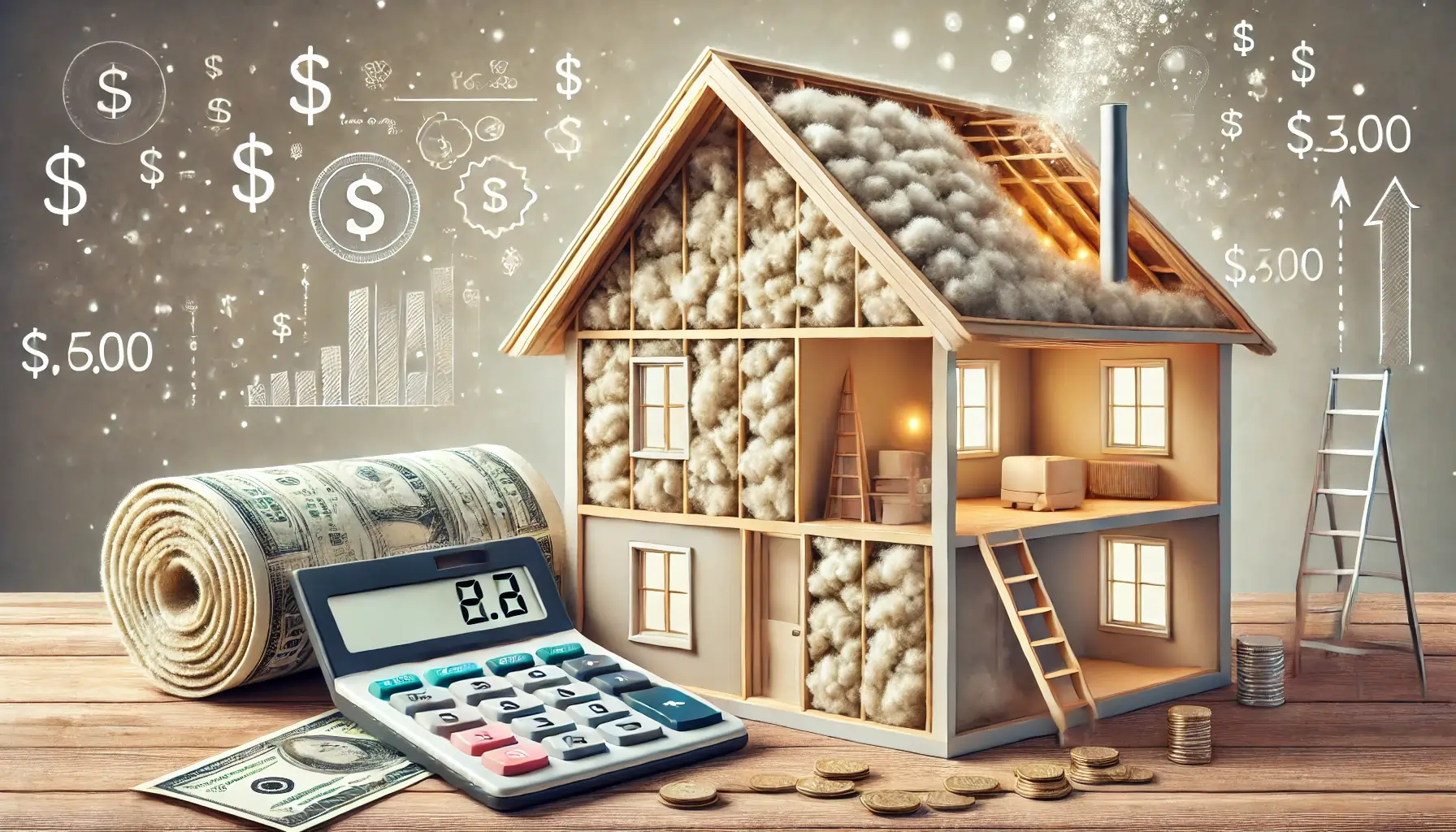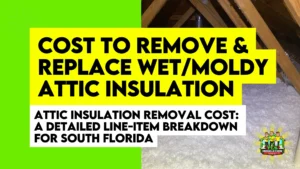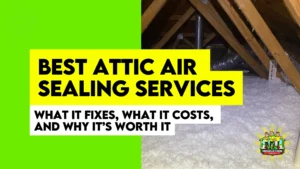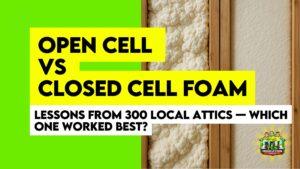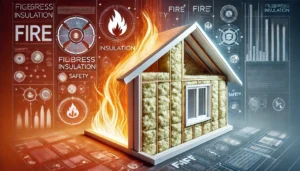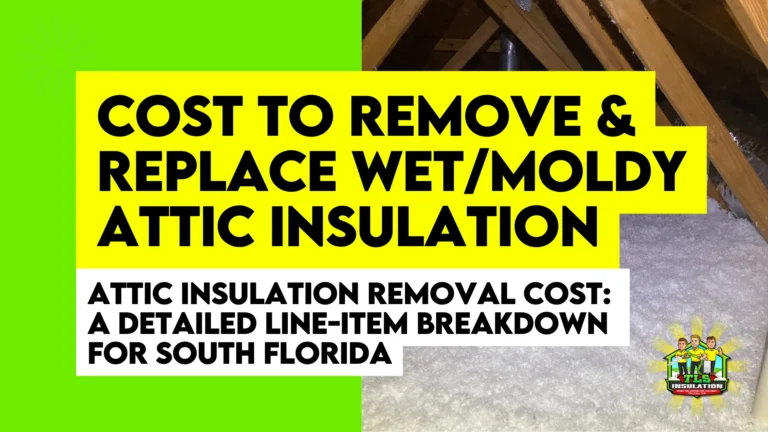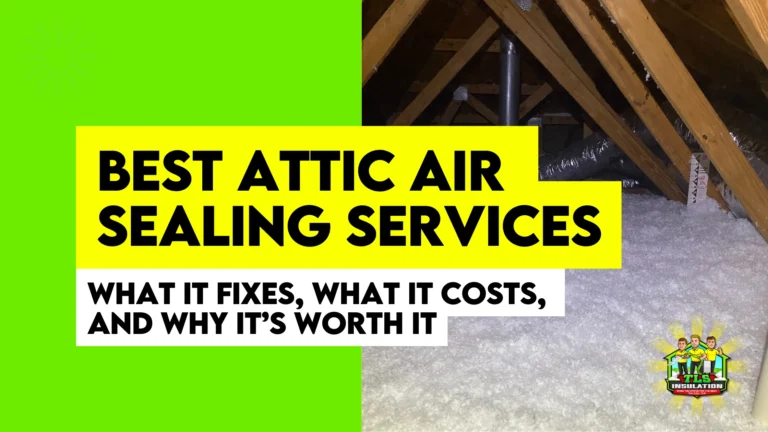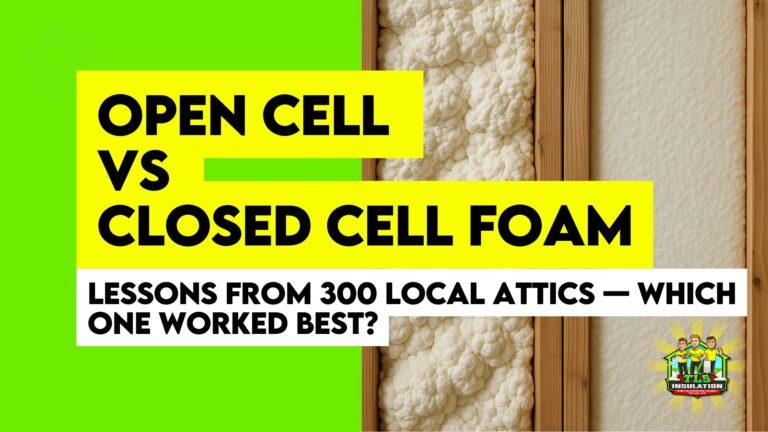Wondering how much does blown-in insulation cost for your home? On average, the cost of blown-in insulation ranges from $1.50 to $2.80 per square foot, leading to an average cost of blown-in insulation between $1,500 and $2,800 for a 1,000-square-foot area.
However, calculating the cost of blown-in Insulation isn’t one dimensional. In fact, Several factors influence this cost, including the type of insulation material—such as fiberglass insulation, cellulose insulation, or rock wool—the square footage, and the required R-value or insulation thickness (e.g., R-38 is commonly recommended for warmer climates like Florida’s Miami, Orlando, and Tampa).
Other than these, it also matters which part of your house needs the insulation. In regions like Florida, proper attic insulation is crucial to combat heat and humidity, enhancing energy efficiency and reducing energy bills. Additionally, labor expenses can vary based on your zip code and whether the installation is in attic spaces, crawl spaces, or wall cavities.
According to the U.S. Department of Energy, adequate insulation can lower heating and cooling costs by up to 20%, making blown-in insulation a cost-effective home improvement investment.
Stop Guessing the Cost — Let TLS Energy Savers Do the Math for You!
Don’t waste hours estimating insulation prices. Get a free, no-obligation consultation with our certified Florida insulation experts.
- Free, no-obligation insulation consultation.
- Get your real-time insulation cost — no math, no stress.
- Expert estimate based on your area, size, and material.

Factors Affecting Blown-In Insulation Cost
To provide a clear understanding of how various factors influence the cost of blown-in insulation, TLS Energy Savers presents you with a comprehensive table. This table outlines key elements such as types of insulation materials, area size, insulation thickness (R-value), and other considerations, along with their average or estimated pricing.
| Types of Insulation Materials | Details | Average Cost |
|---|---|---|
| Fiberglass Insulation | Made from spun glass fibers; resists moisture and mold | $0.50 – $2.00 per square foot |
| Cellulose Insulation | Made from recycled paper; treated for fire resistance | $0.60 – $2.30 per square foot |
| Rock Wool (Mineral Wool) | Made from molten rock; excellent fire resistance | $1.40 – $2.10 per square foot |
| Area Size and Type | Details | Average Cost |
|---|---|---|
| Attic Insulation | Open space; easier access | $1,500 – $2,700 total for 1,000 sq ft |
| Wall Insulation | Requires drilling; more labor-intensive | $1.70 – $3.70 per square foot |
| Crawl Space Insulation | Confined space; may need moisture barriers | $1,000 – $2,500 total for 1,000 sq ft |
| Insulation Thickness (R-value) | Details | Average Cost |
|---|---|---|
| R-13 (3.5 inches) | Mild climates; basic insulation | Lower end of material cost per sq ft |
| R-38 (12 inches) | Recommended for attics in warmer climates like Florida | Mid-range material cost per sq ft |
| R-60 (18 inches) | Colder climates; maximum energy efficiency | Higher end of material cost per sq ft |
| Services | Details | Average Cost |
|---|---|---|
| Labor Costs | Varies by region and project complexity | $40 – $70 per hour |
| Old Insulation Removal | Necessary if existing insulation is damaged (e.g., asbestos) | $1.00 – $2.00 per square foot |
| Additional Expenses | Details | Average Cost |
|---|---|---|
| Air Sealing | Sealing gaps before insulation | $350 – $1,500 total |
| Moisture Barrier Installation | Prevents mold and moisture issues | $0.50 – $1.50 per square foot |
| Regional Price Variations | Based on zip code and local market | Prices may vary by 10% – 20% |
| DIY vs. Professional Installation | DIY may save on labor but requires equipment rental | Equipment rental: $100 – $200 per day |
Stop Guessing the Cost — Let TLS Energy Savers Do the Math for You!
Don’t waste hours estimating insulation prices. Get a free, no-obligation consultation with our certified Florida insulation experts.
- Free, no-obligation insulation consultation.
- Get your real-time insulation cost — no math, no stress.
- Expert estimate based on your area, size, and material.

Types of Insulation Materials
Fiberglass Insulation
Fiberglass insulation is made from fine glass fibers and is commonly used in attic insulation due to its affordability and ease of installation. The price for blown-in insulation using fiberglass averages between $0.50 to $2.00 per square foot, making it a cost-effective option for many homeowners.
In warmer climates like Florida, fiberglass performs well in attic spaces, helping to reduce heat transfer and lower energy bills. But it majorly depends on a high quality blown-in insulation service. It has an R-value of approximately R-2.5 to R-4.0 per inch, requiring adequate insulation thickness to achieve desired energy efficiency.
The loose fill insulation cost for fiberglass remains low, offering a balance between performance and budget for home improvement projects.
- Attic spaces and crawl spaces in warmer climates like Miami, Orlando, and Tampa.
- Areas where moisture resistance is important.
- Blown-in Attic Insulation: Approximately 12 inches to achieve R-38.
- Wall Insulation: Around 3.5 inches for R-13.
Cellulose Insulation
Cellulose insulation is an eco-friendly option made from recycled paper treated with fire retardants. It’s ideal for filling wall cavities and crawl spaces due to its ability to conform to irregular spaces, reducing air leaks.
The average cost of blown-in insulation using cellulose ranges from $0.60 to $2.30 per square foot. In colder climates, cellulose’s higher density provides better insulation against heat loss, improving energy efficiency. It boasts an R-value of about R-3.2 to R-3.8 per inch, requiring less material to achieve higher R-values compared to fiberglass.
However, cellulose can absorb moisture, potentially leading to mold or decay if not properly sealed. Considering the blown-in insulation cost, cellulose offers excellent performance for homeowners seeking sustainable insulation materials.
- Filling wall cavities and irregular spaces in exterior walls.
- Homes in colder climates needing higher thermal resistance.
- Attic Insulation: About 10 inches to achieve R-38.
- Wall Insulation: Approximately 3.5 inches for R-13.
Rock Wool (Mineral Wool) Insulation
Rock wool, also known as mineral wool, is manufactured from molten rock and steel slag, offering superior fire resistance and sound absorption. It’s suitable for areas requiring high thermal resistance, such as exterior walls and attic floors in colder climates.
The price for blown-in insulation with rock wool is higher, averaging $1.40 to $2.10 per square foot, reflecting its premium performance. With an R-value of R-3.0 to R-3.3 per inch, it provides consistent insulation even at higher temperatures.
Rock wool is naturally resistant to moisture and does not support the growth of mold or fungi. For homeowners prioritizing durability and fire safety, the higher material cost and labor costs of rock wool are offset by its long-term benefits, despite increasing the overall blown-in insulation costs.
- Areas requiring high fire resistance, such as around fireplaces and furnaces.
- Exterior walls and attic floors in colder climates for maximum thermal performance.
- Attic Insulation: Approximately 12 inches to achieve R-38.
- Wall Insulation: Around 3.5 inches for R-15.
Stop Guessing the Cost — Let TLS Energy Savers Do the Math for You!
Don’t waste hours estimating insulation prices. Get a free, no-obligation consultation with our certified Florida insulation experts.
- Free, no-obligation insulation consultation.
- Get your real-time insulation cost — no math, no stress.
- Expert estimate based on your area, size, and material.

Type and Depth of Areas
Attic Insulation
The cost to blow insulation in an attic typically ranges from $1,000 to $2,700, depending on factors such as the size of the attic, type of insulation material, and desired R-value, and most importantly choosing a right attic insulation service. For example, the attic insulation cost depends on r-value like how much inches of insulation you need in your attic. For achieving an R-38 insulation level, recommended for warmer climates like Florida, requires about 12 inches of fiberglass insulation. This level of insulation helps reduce heat transfer, lowering your energy bills and improving indoor comfort.
- Material Choice: Options include fiberglass, cellulose, and rock wool, each varying in cost and performance.
- Installation Complexity: Attics with limited access or existing insulation may require additional labor, impacting overall labor costs.
- Energy Savings: Proper insulation can lead to up to 20% reduction in heating and cooling costs, according to the U.S. Department of Energy.
Wall Insulation
Blown-in wall insulation involves injecting insulation material into existing wall cavities, which can be more labor-intensive than attic insulation. The blown-in insulation cost per sq ft for walls ranges from $1.70 to $3.70, influenced by factors like wall construction, accessibility, and the need for repairs post-installation. Insulating walls improves your home’s thermal envelope, reducing drafts and enhancing overall comfort.
- Enhanced Comfort: Reduces air infiltration, leading to more consistent indoor temperatures.
- Material Selection: Cellulose insulation is often preferred for walls due to its ability to fill small gaps effectively.
- Professional Installation Recommended: Ensures proper coverage and minimizes potential damage to existing structures.
Crawl Space Insulation
Insulating crawl spaces can prevent moisture problems and improve your home’s energy efficiency. The cost typically falls between $1,000 and $2,500 for a 1,000-square-foot area. Proper insulation in crawl spaces helps in reducing energy loss through the floor and prevents issues like mold growth due to damp conditions.
- Moisture Control: Installing a vapor barrier along with insulation prevents moisture accumulation.
- Access Challenges: Limited space can increase labor costs due to the difficulty of installation.
- Material Options: Fiberglass is commonly used, but spray foam insulation may offer better moisture resistance at a higher cost.
Ceiling Insulation
While less common, blown-in insulation can also be used for ceilings between floors to improve soundproofing and thermal regulation. Costs are similar to wall insulation, ranging from $1.70 to $3.70 per square foot. Insulating ceilings can significantly reduce noise transmission and enhance the comfort of living spaces.
- Installation Difficulty: Accessing ceiling cavities may require removing sections of the ceiling, increasing both labor costs and repair expenses.
- Material Choices: Fiberglass and mineral wool are popular due to their sound-dampening properties.
Labor Costs, Regional Price Variations, and Additional Expenses
Labor Costs play a significant role in the overall price for blown-in insulation. On average, professional installation labor ranges from $40 to $70 per hour, depending on the project’s complexity and the insulation material used. For a standard attic insulation project, labor can account for about $1.00 to $1.50 per square foot. Homeowners should consider that while DIY installation might save on labor expenses, improper installation can lead to reduced energy efficiency and increased costs in the long run.
Regional Price Variations affect the average cost of blown-in insulation due to differences in local labor rates, material availability, and climate conditions. For instance, in areas with colder climates, like the northern states, the demand for insulation services is higher, which may increase both material cost and labor costs by 10% to 20%.
Conversely, regions with lower living costs may offer more competitive pricing. It’s advisable to obtain multiple quotes based on your zip code to find the best rates.
Additional Expenses such as old insulation removal and air sealing can impact the total blown-in insulation cost. Removing existing insulation, especially if it contains hazardous materials like asbestos, can add $1.00 to $2.00 per square foot.
Air sealing is crucial for maximizing the effectiveness of the new insulation by eliminating drafts and moisture infiltration; this service typically costs between $350 and $1,500. While these are additional upfront expenses, they contribute to long-term savings on energy bills and prevent issues like mold and moisture damage.
Stop Guessing the Cost — Let TLS Energy Savers Do the Math for You!
Don’t waste hours estimating insulation prices. Get a free, no-obligation consultation with our certified Florida insulation experts.
- Free, no-obligation insulation consultation.
- Get your real-time insulation cost — no math, no stress.
- Expert estimate based on your area, size, and material.

Blown in Insulation Cost for DIY vs Professional Installation
DIY Installation Blown-in Insulation Cost:
Opting for a DIY approach allows homeowners to reduce the overall blow-in insulation cost by eliminating labor expenses. By purchasing bags of blown insulation like fiberglass or cellulose and renting an insulation blower (about $100 to $200 per day), you can insulate areas such as attic spaces on your own schedule. This method is suitable for those comfortable with home improvement projects and looking to save on material costs.
DIY Installation Pros:
- Cost Savings: Eliminates labor costs, lowering overall expenses.
- Flexibility: Work on your own schedule without coordinating with contractors.
- Personal Satisfaction: Gain hands-on experience and knowledge about your home’s insulation.
DIY Installation Cons:
- Skill Requirement: Requires understanding of proper installation to avoid issues like moisture buildup or mold.
- Equipment Needs: Must rent and learn to operate insulation blowing machinery.
- Time-Consuming: Projects may take longer than professional installation.
Professional Installation Cost To Blown-in Insulation
Hiring professionals ensures that the insulation material is installed correctly and efficiently. Experienced installers can handle complex areas like wall cavities and crawl spaces, achieving the desired R-value and maximizing energy efficiency. While this option increases the blown-in insulation cost due to labor fees (approximately $1.00 to $1.50 per square foot), it often results in superior long-term performance and peace of mind.
Professional Installation Pros:
- Expertise: Professionals ensure optimal coverage and insulation thickness, enhancing effectiveness.
- Efficiency: Faster completion with minimal disruption to your home.
- Warranty and Compliance: Work is often guaranteed and complies with local building codes.
Professional Installation Cons:
- Higher Cost: Increases blown-in insulation cost due to added labor expenses.
- Scheduling: Requires coordination with contractors’ availability.
- Less Control: Limited involvement in the installation process.
Stop Guessing the Cost — Let TLS Energy Savers Do the Math for You!
Don’t waste hours estimating insulation prices. Get a free, no-obligation consultation with our certified Florida insulation experts.
- Free, no-obligation insulation consultation.
- Get your real-time insulation cost — no math, no stress.
- Expert estimate based on your area, size, and material.

Frequently Asked Questions (FAQs)
How much does blown-in insulation cost per square foot?
Blown-in insulation typically costs between $1.50 and $2.80 per square foot, depending on the insulation material and installation complexity.
Is blown-in insulation in the attic worth the investment?
Yes, installing blown-in attic insulation can reduce energy bills by up to 20%, providing significant long-term savings and improved home comfort.
Can I install blown-in insulation myself to save money?
While DIY installation can lower costs, professional installation ensures proper coverage and optimal performance, potentially saving more on energy bills over time.
How many bags of blown insulation do I need for my attic?
The number of bags required depends on your attic’s square footage, desired R-value, and the insulation material; manufacturers provide coverage charts to calculate this.
Does the cost of blown-in insulation vary by region?
Yes, regional price variations due to labor rates and material availability can affect the overall cost; prices may vary by 10% to 20% based on your zip code.

